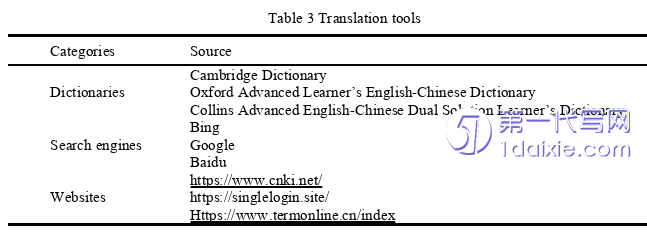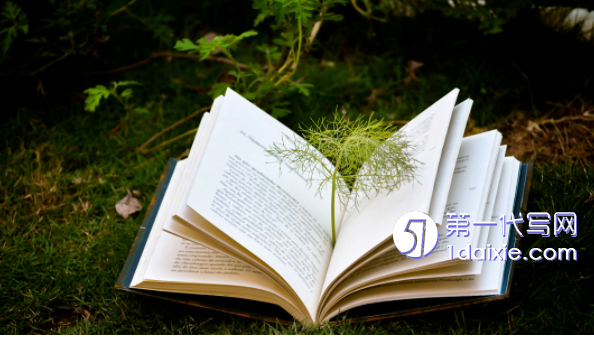本文是一篇英语论文,本研究在句法层面,针对原文中出现的复杂长句、被动句和省略句等语言现象,灵活运用了语态转换、语序调整、语句拆解和增补等翻译技巧,以符合目标读者的语言表达习惯和阅读感受。
Chapter 1 Task Description
1.1 Selection of the Source Text
Hybrid teaching refers to the combination of online and offline teaching,which firstemerged in 2000(Li,2022).After 2013,the concept of hybrid teaching is enriched asteaching situation based on the combination of mobile equipment,online learningenvironment and classroom discussion.It emphasizes the creation of a highlyparticipatory and personalized learning experience for students,and highlights the hybridof teaching and tutoring in a“student-centered”learning environment(Tan,2019).InChina,the available teaching tools and technologies are mature and innovative enough,which meet the needs of most teachers.However,at present,the hybrid teaching is stilldominated by teachers and supplemented by students,the participation of students is notsatisfactory,which does not create a personalized learning experience for students,andthe means of evaluation are limited.Besides,most of the books on hybrid teaching arewritten from a third-party perspective,with fewer presenting specific classroom examples.
The book The Hybrid Teacher:Using Technology to Teach In Person and Onlineintroduces the author’s personal experience and classroom cases in a first-person tone.And it presents a wide range of educational technology resources that are in line withcurrent trends in technology and integrate technology into teaching,which is essential forthem to build the connection between knowledge and students.In addition,a variety ofteaching methods are also conducive to arousing students’learning initiative and makethem actively participate in hybrid teaching.In other words,information technology canbe used to trigger students’thinking(Cui,2023).What’s more,it introduces the use ofeducational technology resources to carry out asynchronous teaching.

1.2 Analysis of the Source Text
Analysis of the source text guides the translation process in that it provides the basisfor decisions about the feasibility of the translation assignment(Nord,2018).Theanalysis of the source text in this chapter is composed of the introduction of the sourcetext and the linguistic features of the source text in this section.
1.2.1 Introduction to the source text
The book The Hybrid Teacher:Using Technology to Teach In Person and Onlinewas published in June,2021,and was written by Emma Pass.The target readers are thosein-service teachers from primary to college.Emma Pass,the author of the practical guidecurrently lives in Fort Collins,Colorado,where she works as an EdTech consultantthrough her consulting company,Empowered Edu.Besides,she also teaches 7th-and8th-grade language arts at PSD Global Academy(PGA),a public hybrid school in whichstudents spend half of their time learning in person and half of their time learning at home.
Chapter 2 Theoretical Framework
2.1 An Overview of Skopos Theory
Skopos theory is the core theory of the German functionalist school,whichoriginated in the 1970s by Katharina Reiss.She introduced the concept of“functionaltype”and listed text function as a standard of translation criticism(Nord,2018).Reissargues that the priority in practice should be given to the functional characteristics of thetranslation.
In 1978,Vermeer published his Framework for a General Translation Theory,which took the skopos of the text as the first criterion for translation(Zhong&Zhong,1999).Vermeer believes that translation should be dominated by its purpose.Thetranslation should be based on the target readers and the clients of translation tasks,especially the function of the target text.Therefore,translation methods and strategiesshould be determined according to the intended purpose and function of the translation(Nord,2018).In 1984,Mantari regarded translation as a cross-cultural communicativeaction.However,instead of using the traditional term“translation”,Mantali uses the term“translational action”(Tan,2004).She focuses on three aspects of the behaviour of thetranslation process,the role of the participants and the context in which the translationprocess takes place.It further broadens the application field of functionalist translationtheory(Zhong&Zhong,1999).Finally,Nord systematically elaborated on the factors tobe taken into account in textual analysis in translation,and in her book Text Analysis inTranslation,she elaborated on the relationship between source text analysis and Skopostheory and put forward the principle of function plus loyalty,thus comprehensivelysummarizing and perfecting the functionalist theory.
2.2 Application of Skopos Theory in Translation
Skopos theory holds that translation behavior can be based on purpose and function.In other words,it takes the skopos rule as the first principle,and requires the translator toadjust translation methods according to translation purposes,which gives the translatorgreater flexibility.Moreover,it also requires that the translation should be oriented to thetarget readers,which provides a new perspective for translation research and practice.
Since the introduction of Skopos theory,it has attracted extensive research.Manyscholars have explored different versions of classic literary texts at home and abroad.Among them,the types of literary works include novels,dramas and so on.For example,the differences between the two English versions of Hamlet were analyzed by ZhuJingwen in 2021.The translation strategies of tea culture in Water Margin were studied by Jiang Zhiwen.With the deepening of research,the application scope of Skopos theoryhas gradually expanded to non-literary texts such as subtitles,official websites,teachingmaterials and news,with strong practicability and wide application scope.For example,the Translation of Cross-border E-commerce Product Introduction from the perspectiveof Skopos theory was carried out by Long Jie in 2023.
Chapter 3 Translation Process ............................. 9
3.1 Pre-translation ........................................ 9
3.2 While-translation .......................................... 11
3.3 Post-translation ................................................ 14
Chapter 4 Case Analysis .............................................. 15
4.1 Lexical Level............................................. 15
4.1.1 Annotation .............................................. 15
4.1.2 Diction .......................................... 17
Chapter 5 Conclusion ....................................... 40
5.1 Major Findings ........................................ 40
5.2 Limitations .......................................... 41
Chapter 4 Case Analysis
4.1 Lexical Level
Translation requires a comprehensive understanding of the source text,and thefoundation of the understanding lies in the lexical level.On the other hand,and itsunderstanding depends on the context(Feng,2008).According to Oxford AdvancedLearner’s Dictionary,the word“lexical”means“connected with the words of a language,and lexical items including words and phrases”.Therefore,in the translation practice,several translation techniques including annotation,diction and omission are adopted tofaithfully convey the lexical meaning of the source text under the guidance of Skopostheory.
4.1.1 Annotation
The method of annotation can be divided into literal translation plus annotation andtransliteration plus annotation.Literal translation plus annotation refers to reproducingthe meaning in the source text by literal translation,and adding annotations to bridge thegap between the source language and the target language(Fang,2011).Transliterationplus annotation refers to the use of the pronunciation of the source language into thetarget language,and expressing the unique connotation of the word by annotation toachieve the purpose of information transmission(Fang,2011).

Chapter 5 Conclusion
5.1 Major Findings
Through the whole translation practice,the translator gained more knowledge abouthybrid teaching,studied Vermeer’s Skopos theory deeply,enhanced the academic abilityand mastered the specific methods of translation.
The first finding is a comprehensive mastery of the concept and application ofhybrid teaching.In the process of the translation,the translator browsed lots of literaturerelated to hybrid teaching,through which she realized that it not only refers to the hybridof online and offline teaching forms,but also highlights the mixture of teaching andcounseling approaches in a“student-centered”learning environment.Besides,thetranslator has a concrete understanding of the use of educational resources mentioned inthe book,which lays the foundation for the future teaching work and also helps thoseeducators and researchers.
The second finding is the study of Skopos theory and its application in translation.The skopos determines the whole translation process.Based on this,before translation,the translator needs to set the translation skopos first,and adopt appropriate techniques.In addition,the translation must be coherent and acceptable to the recipients,while thereshould also be coherence between the translation and the source text.Therefore,thetranslator should organize the language from the perspective of the target readers to avoidredundancy of expression.
reference(omitted)
